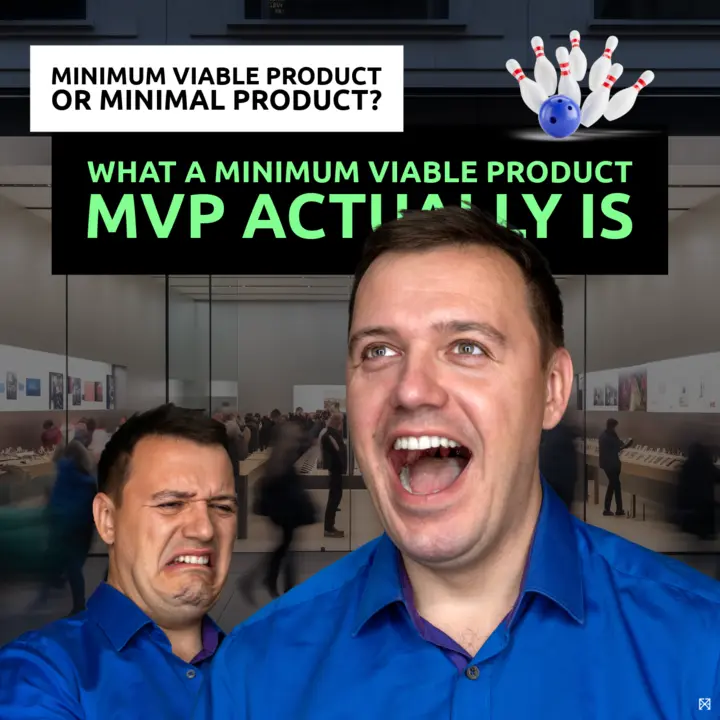Tarpit ideas are dangerous because they seem initially attractive but ultimately take you under—and not in the good way of “entre-preneurship” from Latin “under-taking”
At the same time tarpit ideas are so fascinating because they might enable success where others have not found it—promising riches and glory.
The Concept of Tarpit Ideas
Tarpit ideas refer to concepts or strategies that seem initially attractive but ultimately consume a disproportionate amount of resources, yielding minimal benefit.
These ideas are akin to a "tarpit" because they can trap your organization in unproductive directions, sapping time, money, and focus away from more fruitful endeavors.
Tarpit ideas typically look promising on the surface and may even have initial success or support. However, as they develop, the complexity and cost of these ideas often spiral, overshadowing their potential value.
Identifying such ideas early can prevent significant resource misallocation. This is critical in your strategic decision-making where the opportunity costs of pursuing less than optimal paths are very high.
Shiny Prehistoric Tar Pits
“Tarpit” is a metaphor to describe the type of ideas or projects that trap organizations or teams in situations where they expend a lot of effort but make so little or no progress towards their goals that they become unable to gather any more resources from its environment.
This concept is drawn from the natural phenomenon of a tar pit, a geological formation where thick, viscous tar accumulates in a pool or pit. In prehistoric times, these tarpits were notorious for capturing animals. Creatures would often wander into the tar, attracted perhaps by water on its surface, mistake the shiny surface as water, or by other animals trapped there, and then find themselves ensnared. Unable to escape, they would eventually perish. Today they make a paleontologists’ haven because without oxygen the trapped creatures are well preserved.
In business and technology contexts, a "tarpit" idea similarly ensnares resources and effort. The initial attraction of a “shiny idea” might be due to the apparent potential for high returns, revolutionary outcomes, or critical solutions. However, once committed, an organization might find itself stuck, continuously investing more time, money, and effort, but unable to easily extricate itself due to the commitments already made or the partial successes achieved. These projects can drain resources like a real tarpit, holding them fast and preventing investment in more fruitful ventures.
Dangerously Hidden Tarpit Ideas
There’s this dangerous category of “classical tarpit ideas”
There are certain ideas that have been frequently reconsidered because they seem feasible or highly rewarding.
Yet they consistently lead to failure or underperformance for even the most promising and qualified teams you can possibly assemble.
Usually you can see these ideas from a mile away because they are perennially attractive to many. See the examples for some prominent ones...
And only a hidden graveyard is proof of these repeated attempts without successes. Because the problem is no-one wants to talk about that graveyard because their attempts are on said ideas are laying there too and seem so obviously stupid in hindsight.
And admitting that would uncover that they too were incompetent to solve or see what only later unmasked itself as a rather complex set of challenges.
So there’s a pattern indicating that these ideas are not merely unexplored opportunities but rather complex challenges that have historically proven to be impractical or unprofitable, yet no one speaks about them.
How to less likely fail with tarpit ideas
The key insight here is that before committing resources to such an idea, it is crucial to understand why previous attempts by others have failed.
This involves a thorough analysis of the failures of others to identify any common pitfalls or barriers that weren’t successfully navigated.
Avoiding tarpit ideas with pre-mortems
So to not fall for tarpit ideas you must do something like a post-mortem.
A pre-mortem is an analytical technique where you anticipate the potential failure of a project and explore the reasons why it might fail before it starts.
Connecting the concept of avoiding tarpit ideas with the strategy of conducting a pre-mortem is an proactive approach so you and your team can identify possible pitfalls and weaknesses in your plan.
Pro-active means “before taking action”.
Testing your plan before you go on the expedition thus allowing for preventive measures or a complete strategy reassessment.
Sure, no plan survives first enemy contact, but hopefully you’ll survive it to make adjustments.
In the context of tarpit ideas, a pre-mortem is particularly valuable because it compels the team to rigorously analyze why similar efforts have historically failed and to clearly articulate what will be done differently this time to avoid those same outcomes.
This is not just about foreseeing possible challenges but also about realistically assessing whether the underlying issues can be overcome with the current resources, technology, and knowledge.
This approach helps prevent the sunk cost fallacy and other cognitive biases that lead organizations to persist with bad ideas simply because they have already invested in them. It ensures that if you proceed with an idea that has repeatedly failed others, you do so with open eyes and a solid plan to address known issues, thereby increasing your chances of success.
Fun Examples of Tarpit Ideas
When I consider classic tarpit ideas, the gold rush and logistics immediately spring to mind. Of course there are many other intriguing examples worth exploring. Gold retains its allure, much like the petroleum tar pits from which the metaphor is derived—these deceptive pits gleamed, tricking animals into mistaking them for waterholes, only to ensnare them, and their decaying scent would attract even more victims. Which makes them rich “gold” treasures for paleontologists.
Although the quest for gold is a well-documented historical endeavor, it remains relevant today, partly due to the popularity of shows like Discovery’s "Gold Rush." These ventures might still be considered tarpit ideas – there’s definitely the allure and danger of seemingly promising opportunities that can ultimately prove to be traps – but for reasons beyond the traditional constraints of "resources, technology, and knowledge."
Gold Digging – A Historical Tarpit Idea
During gold rushes throughout history, such as those in California or the Yukon, the initial concept of finding gold and making a fortune was highly alluring and led many to invest significant amounts of money and resources.
However, most ended up not finding enough gold to cover their expenses, let alone make a fortune.
The few who did succeed often were those who got in early or supplied goods and services to miners.
Today, advancements in mining technology, geological survey methods, and financial instruments to hedge against risks have changed the dynamics, making it a viable enterprise under the right circumstances.
It shows how technological and methodological improvements can shift an idea away from being a tarpit, whereas the next example highlights ongoing issues despite technological advances. This underscore the importance of understanding both historical context and current capabilities when evaluating the potential of a business idea.
Local Logistics Networks
We have discussed local produce delivery services for 20 years now and it seems a tarpit idea to me still today.
The concept of something like a farm-to-table produce delivery is appealing because it supports local agriculture and promises fresh produce to me the consumer.
However, it faces significant logistical challenges, including the need for a highly efficient distribution system to handle perishable goods, demand variability, and small scale of operations which can increase costs disproportionately.
While technology in logistics has vastly improved, enabling better inventory and delivery management, the fundamental challenge of cost-effectively scaling such personalized services remains a hurdle.
It has the allure of a seemingly beneficial idea – not so much profitable but beneficial. But into without a clear path to overcoming the inherent challenges I cannot convince myself to commit resources.
Mom-Service Startups
These startups that aim to commercialize services traditionally provided within a household context, such as meal preparation, childcare, or housekeeping, by offering them through a professionalized, scalable model seem to be predestined to be tarpit ideas.
In the past, often founded by college students who just left home and for the firs time in their life experienced the pain of doing laundry, cooking a tasty meal, or doing grocery shopping…
While the concept is appealing due to the growing market of dual-income households needing such services, it encounters several tarpit-like challenges.
First and foremost, there are scalability issues to overcome. Delivering personalized home services across diverse geographic areas without significant compromises on quality or substantial increases in cost is challenging.
Such services often face stringent regulations, and managing a distributed workforce can be complex and costly-like everything that touches regulatory and labor considerations.
But even if you have figured out everything above, market saturation and differentiation will soon follow for such ideas once the tar is pumped out of the pit. And standing out in a crowded market while keeping prices competitive often leads to razor-thin profit margins.
Personal CRMs
It seems that many popular tarpit ideas involve extending enterprise solutions or service models into the personal realm. These ideas often appear to be straightforward adaptations of successful business strategies into new, untapped markets. However, the challenges and complexities involved can quickly turn these ideas into resource sinks. The examples that fit this pattern best is the "personal CRM".
The idea is to apply Customer Relationship Management (CRM) tools, typically used in businesses to manage interactions with customers and clients, to personal relationships.
Wouldn’t it be amazing to manage your social connections more effectively using technology?
Unfortunately most have to overcome the hurdle of managing something or anything in their personal realm. Leisure clothes and Netflix seem to dominate over a desk in your home library…
Also, the personal nature of relationships can make users skeptical of the perceived inauthenticity even without the automated interactions you get with CRMs. It’s like this “having a book with physical pages in your hand instead of a screen”.
I get it, I like it too. Yet it doesn't hinder me to scan these pages if needed…
It can’t be the data and privacy concerns either because you are already storing my personal information and those of your friends and family in dozens of your apps across dozens of your devices and clouds.
So is it user engagement? Unlike businesses, individuals may not see enough ongoing value in meticulously managing personal relationships through a CRM that might lead to the low adoption and high churn rates.
I don’t know…
Am I falling for the allure of leveraging successful business models in a personal applications realm?
Maybe a personal CRM is a great idea after all!
So let’s get a deep understanding of user needs, market dynamics, and operational challenges to understand the nuanced differences between business and this new personal context and its unique challenges.
Tarpit Idea Autonomous Vehicles?
Self-driving cars and trucks, represent a significant technological ambition aimed at transforming transportation by reducing human error in driving, optimizing logistics, and enhancing mobility for non-drivers.
Despite the clear potential benefits and substantial investments from major tech and automotive companies, fully autonomous driving technology has faced persistent hurdles outside the technological feasibility.
Regulatory challenges, safety standards and liability issues are still being debated.
And the social acceptance issues that arise as the public remains skeptical about the safety and reliability of self-driving cars prove to be more difficult than anything else.
With the path to widespread adoption being fraught with significant unforeseen complexities and costs, Autonomous Vehicles (AV) seem to be a great contemporary tarpit idea at the brink of being solved.
Future Tarpit Idea: Neural Laces
A concept popularized by science fiction and some ambitious tech proposals are neural laces. They involve a mesh that integrates with the human brain to enable direct communication between the brain and computers. The potential applications range from enhancing human cognition to treating neurological disorders. Despite its profound implications for medicine and communication, several factors could make neural laces a tarpit idea.
Between the technical feasibility of creating a safe, effective interfaces between electronic devices and the delicate tissues of the human brain, the ethical and privacy concerns of what it means to manipulate brain activity and accessing thoughts, to the potential for exacerbating inequalities between those who have access to such enhancements and those who do not.
All the above examples highlight the pattern of tarpit ideas:
they are enticing because of their transformative promises whether that is wealth, laziness, or technological acceleration but are mired in complexities that are not fully appreciated at the outset.
Reflecting on these examples it becomes obvious that the feasibility of such ideas can change over time due to advances in technology and changes in the market, but societal changes seem to be following them along with quite some stickiness…
Understanding these complexities and addressing them proactively is crucial to avoid the resource drain typically associated with tarpit ideas—or to plan for them. This is why the non-risk averse capitalization category of Venture Capital (VC) is so cool.







